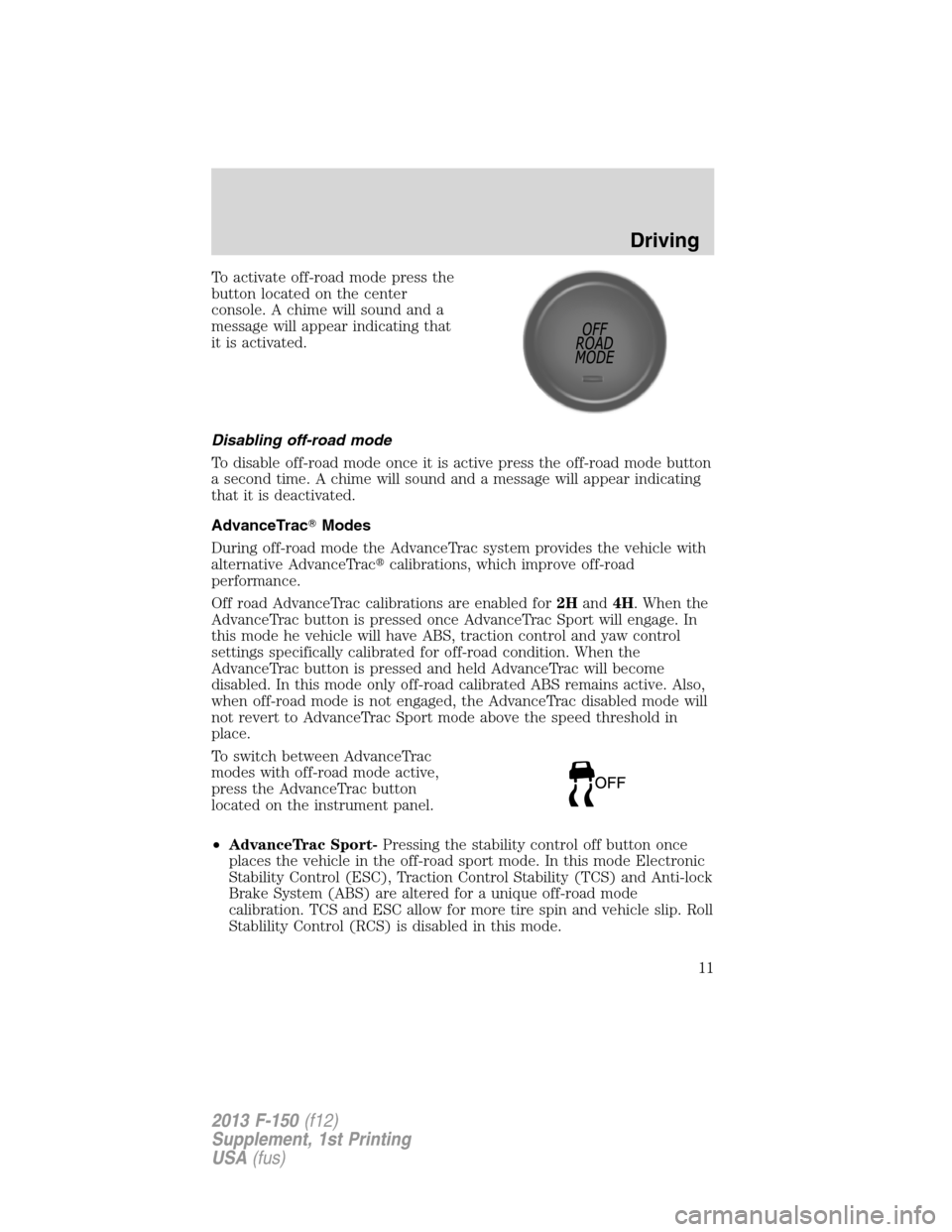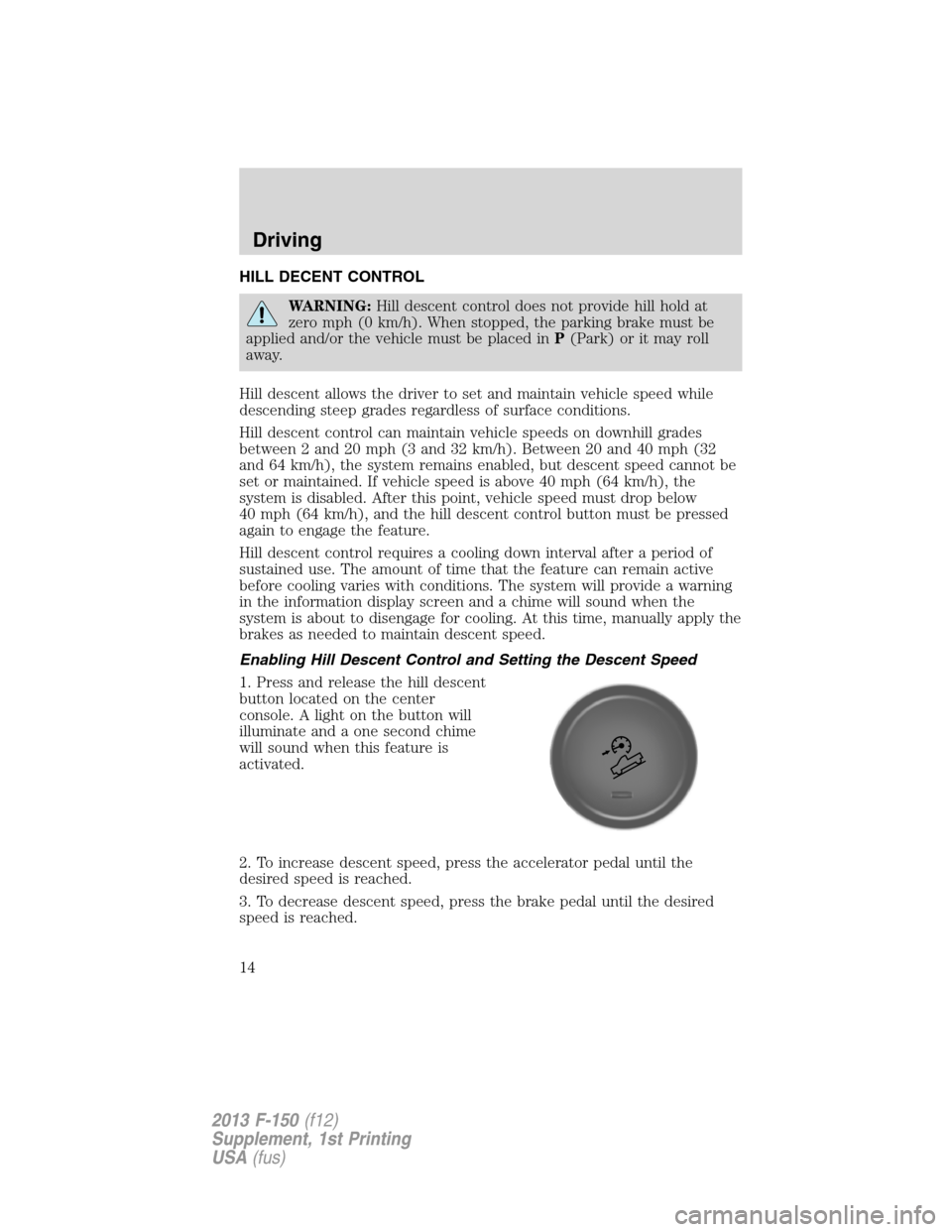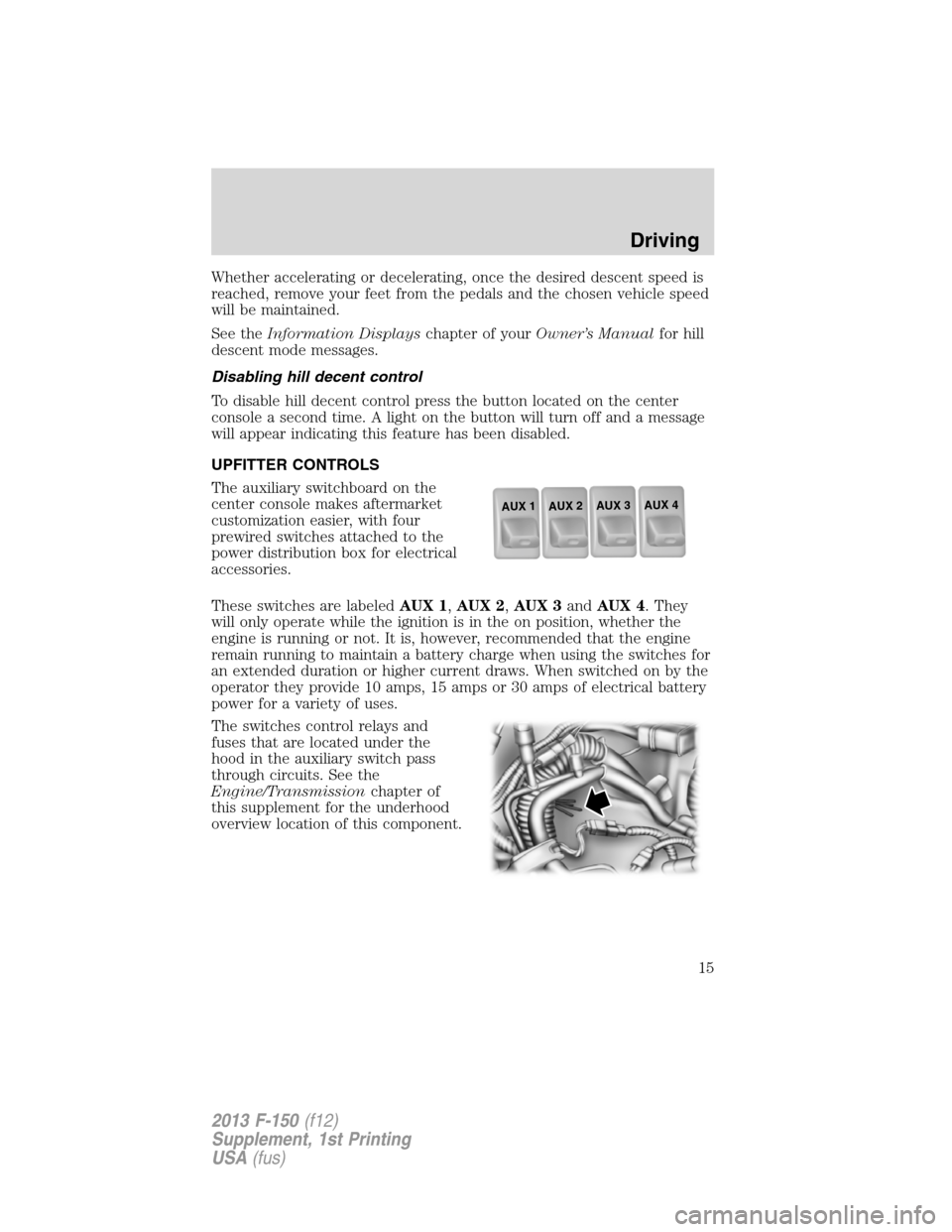Page 12 of 39

To activate off-road mode press the
button located on the center
console. A chime will sound and a
message will appear indicating that
it is activated.
Disabling off-road mode
To disable off-road mode once it is active press the off-road mode button
a second time. A chime will sound and a message will appear indicating
that it is deactivated.
AdvanceTrac�Modes
During off-road mode the AdvanceTrac system provides the vehicle with
alternative AdvanceTrac�calibrations, which improve off-road
performance.
Off road AdvanceTrac calibrations are enabled for2Hand4H. When the
AdvanceTrac button is pressed once AdvanceTrac Sport will engage. In
this mode he vehicle will have ABS, traction control and yaw control
settings specifically calibrated for off-road condition. When the
AdvanceTrac button is pressed and held AdvanceTrac will become
disabled. In this mode only off-road calibrated ABS remains active. Also,
when off-road mode is not engaged, the AdvanceTrac disabled mode will
not revert to AdvanceTrac Sport mode above the speed threshold in
place.
To switch between AdvanceTrac
modes with off-road mode active,
press the AdvanceTrac button
located on the instrument panel.
•AdvanceTrac Sport-Pressing the stability control off button once
places the vehicle in the off-road sport mode. In this mode Electronic
Stability Control (ESC), Traction Control Stability (TCS) and Anti-lock
Brake System (ABS) are altered for a unique off-road mode
calibration. TCS and ESC allow for more tire spin and vehicle slip. Roll
Stablility Control (RCS) is disabled in this mode.
Driving
11
2013 F-150(f12)
Supplement, 1st Printing
USA(fus)
Page 15 of 39

HILL DECENT CONTROL
WARNING:Hill descent control does not provide hill hold at
zero mph (0 km/h). When stopped, the parking brake must be
applied and/or the vehicle must be placed inP(Park) or it may roll
away.
Hill descent allows the driver to set and maintain vehicle speed while
descending steep grades regardless of surface conditions.
Hill descent control can maintain vehicle speeds on downhill grades
between 2 and 20 mph (3 and 32 km/h). Between 20 and 40 mph (32
and 64 km/h), the system remains enabled, but descent speed cannot be
set or maintained. If vehicle speed is above 40 mph (64 km/h), the
system is disabled. After this point, vehicle speed must drop below
40 mph (64 km/h), and the hill descent control button must be pressed
again to engage the feature.
Hill descent control requires a cooling down interval after a period of
sustained use. The amount of time that the feature can remain active
before cooling varies with conditions. The system will provide a warning
in the information display screen and a chime will sound when the
system is about to disengage for cooling. At this time, manually apply the
brakes as needed to maintain descent speed.
Enabling Hill Descent Control and Setting the Descent Speed
1. Press and release the hill descent
button located on the center
console. A light on the button will
illuminate and a one second chime
will sound when this feature is
activated.
2. To increase descent speed, press the accelerator pedal until the
desired speed is reached.
3. To decrease descent speed, press the brake pedal until the desired
speed is reached.
Driving
14
2013 F-150(f12)
Supplement, 1st Printing
USA(fus)
Page 16 of 39

Whether accelerating or decelerating, once the desired descent speed is
reached, remove your feet from the pedals and the chosen vehicle speed
will be maintained.
See theInformation Displayschapter of yourOwner’s Manualfor hill
descent mode messages.
Disabling hill decent control
To disable hill decent control press the button located on the center
console a second time. A light on the button will turn off and a message
will appear indicating this feature has been disabled.
UPFITTER CONTROLS
The auxiliary switchboard on the
center console makes aftermarket
customization easier, with four
prewired switches attached to the
power distribution box for electrical
accessories.
These switches are labeledAUX 1,AUX 2,AUX 3andAUX 4. They
will only operate while the ignition is in the on position, whether the
engine is running or not. It is, however, recommended that the engine
remain running to maintain a battery charge when using the switches for
an extended duration or higher current draws. When switched on by the
operator they provide 10 amps, 15 amps or 30 amps of electrical battery
power for a variety of uses.
The switches control relays and
fuses that are located under the
hood in the auxiliary switch pass
through circuits. See the
Engine/Transmissionchapter of
this supplement for the underhood
overview location of this component.
AUX 1
AUX 2
AUX 3
AUX 4
Driving
15
2013 F-150(f12)
Supplement, 1st Printing
USA(fus)